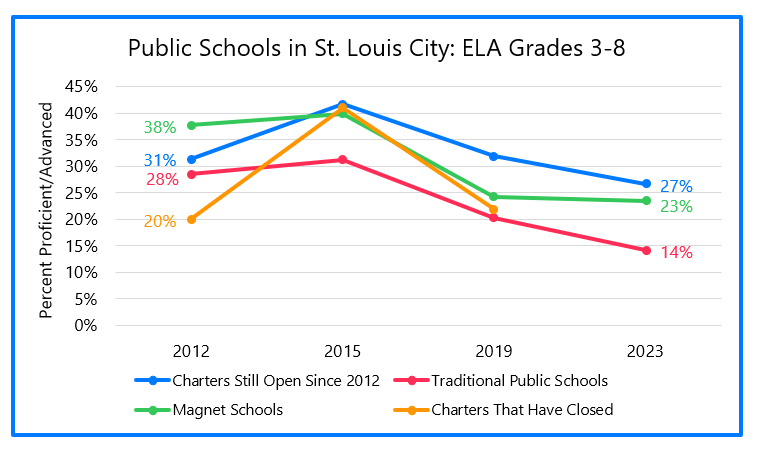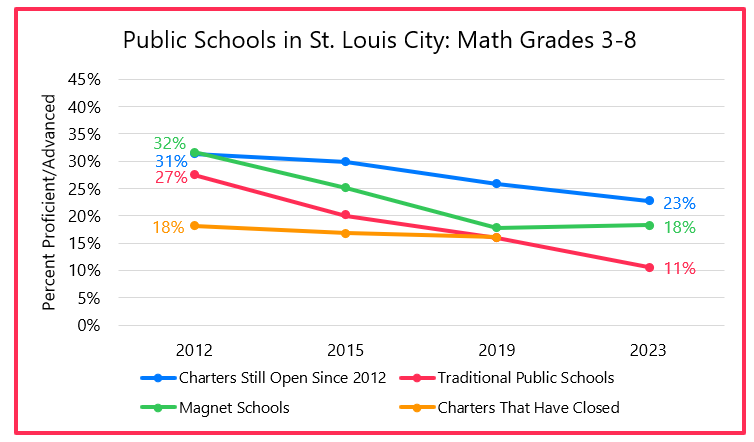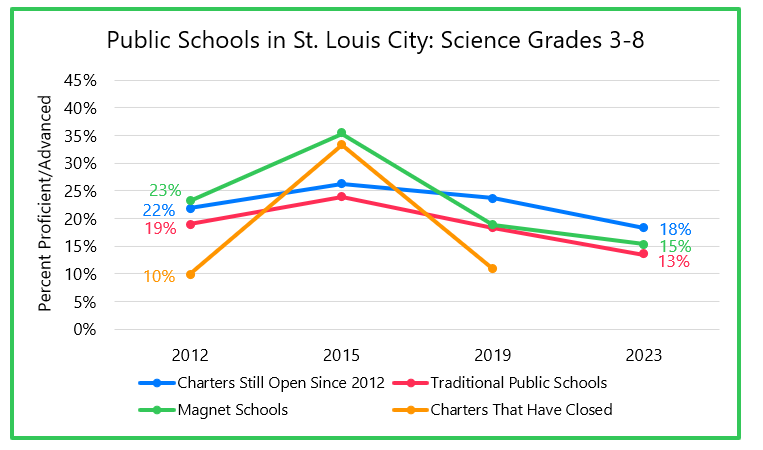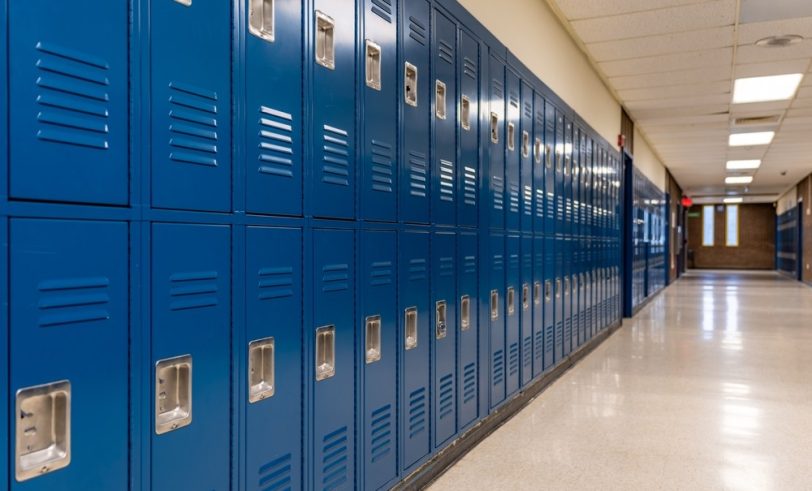One common argument against charter schools is that some have low test scores. It’s true that some charter schools, particularly in the City of St. Louis, have rather low test scores. However, one key difference between charter schools and traditional public schools is that low-performing charters shut down. When successful charters stick around, they should provide benefits for the student population in the area. Looking at test scores in the City of St. Louis from 2012 to the present, this idea seems borne out by the data.
Using school-level data from the Missouri Assessment Program (MAP), we evaluated four different types of schools in the City of St. Louis: charters that were open in 2012 and are still open today, charters that have closed any time between 2012 and 2024, magnet schools (which filter enrollment), and traditional public schools. We looked at the total number of students who scored proficient or advanced in each category (charter, magnet, etc.,) and divided it by the total to calculate the percentages. In these totals, grades 3–8 are all aggregated together, and Algebra I and English II students are also included.



Since the MAP has changed in the time period we are assessing, it is difficult to measure performance within schools—but it is possible to measure performance between different types of schools.
In all three subjects (math, ELA, and science), charter schools that have been open since 2012 (SO Charters) surpassed magnet schools by 2023. In ELA, SO Charters had 7 percent fewer students who were proficient or advanced than magnets, but were 3 percent higher than traditional public schools in 2012. Fast forward to 2023, and SO Charters have 4 percent more students proficient or advanced than magnets and were 13 percent higher than traditional schools. The trend also translates to mathematics. All schools have remained relatively similar in science.
The orange line represents the group of charters that have closed down. Most recently, Hawthorne Leadership School and La Salle Charter had to shutter their doors due to low performance. The design of a charter school allows for schools with less successful models to be phased out. As the figures above display, successful models have benefitted students in the City of St. Louis.
The simple ability to close serves as a mechanism for accountability and competition. New models have been tested—some have succeeded, some have failed—but the ones that have succeeded have exceeded the performance of traditional public schools and magnets. This should be taken into consideration when weighing charter school expansion.



